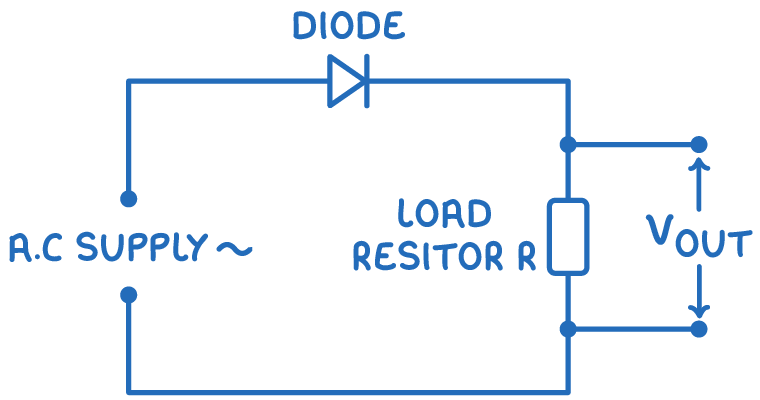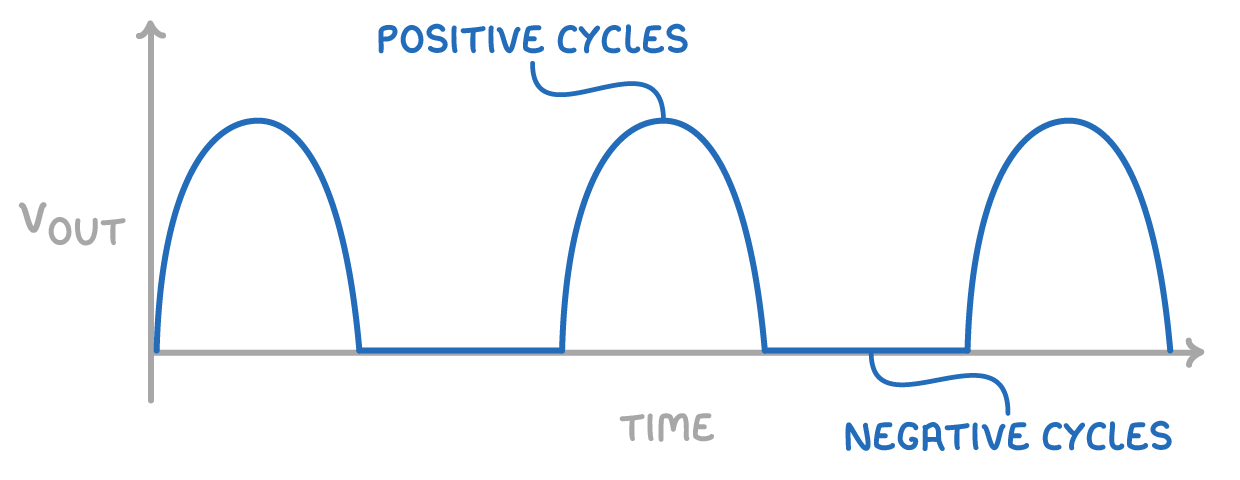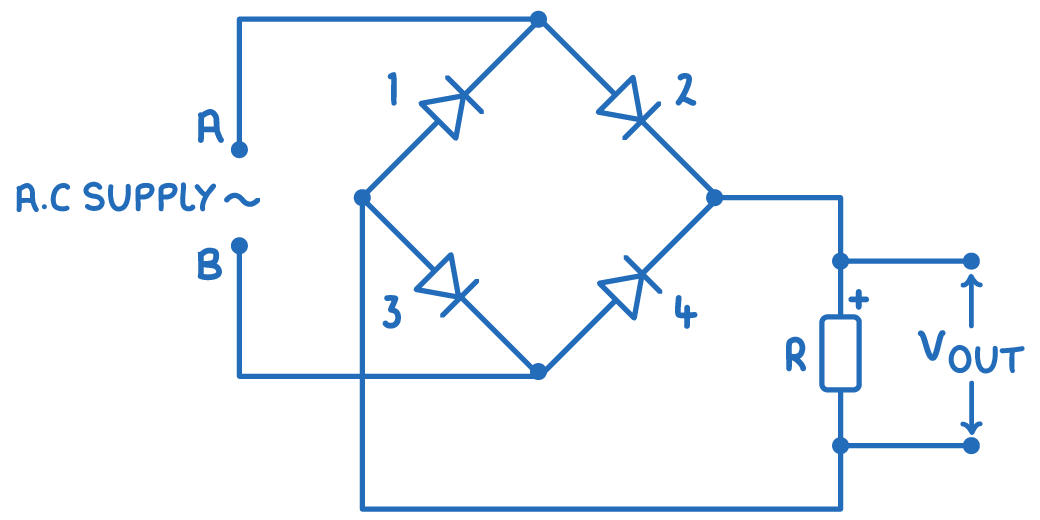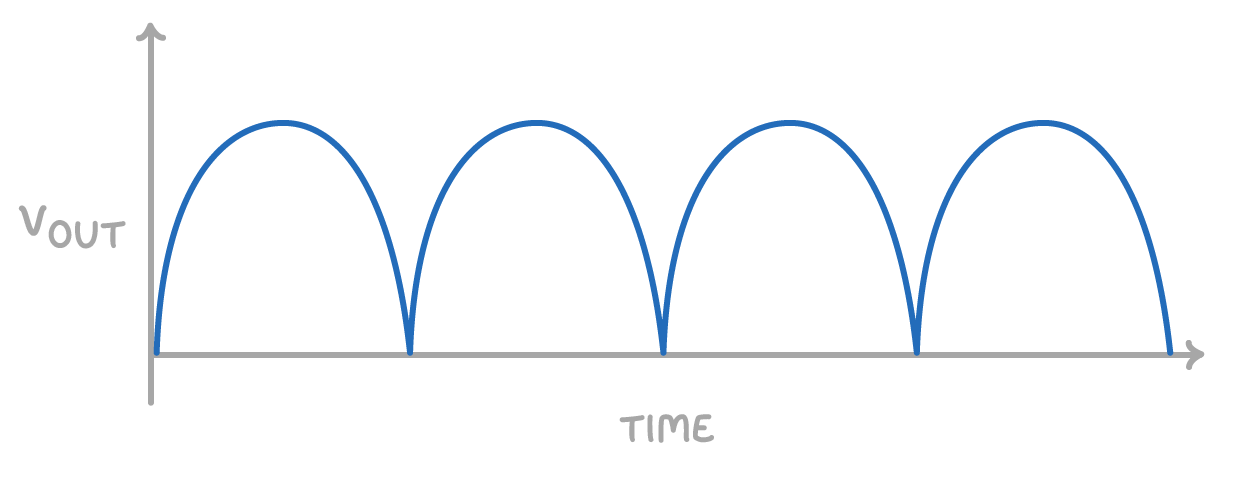Rectification
This lesson covers:
- Understanding rectification and its purpose
- Identifying key differences between half-wave and full-wave rectification
- Interpreting rectification graphs
- Examining the components and process of half-wave rectification
- Investigating full-wave rectification using a bridge rectifier
What is rectification and why is it used?
Rectification refers to the conversion of alternating current (AC) and voltage into direct current (DC) and voltage. It is an essential process in many electronic devices that require a steady DC supply to operate.
For example, devices powered directly by mains electricity (which is AC) need rectification circuits because their internal components work properly only with DC.
Comparing half-wave and full-wave rectification
There are two main approaches to rectification:
- Half-wave rectification - Only positive or negative halves of the AC signal get rectified, resulting in more ripple.
- Full-wave rectification - Both positive and negative halves are rectified, producing less ripple.
Half-wave rectification process
Half-wave rectification uses a single diode and load resistor to convert AC to DC.

Working principle:
- During positive input cycles, the diode is forward biased and conducts current.
- On negative alternations, the diode gets reverse biased so no current flows.
This results in a pulsed DC waveform with significant ripple. The diode only allows one-way flow of current.

Full-wave rectification
Full-wave rectification employs four diodes arranged as a bridge rectifier.

Working principle:
- When terminal A is positive, diodes 2 & 3 conduct current.
- When terminal B is positive, diodes 1 & 4 conduct.
- As a result, the current always flows across the load in the same direction.
This setup rectifies both positive and negative cycles and delivers higher average DC output than half wave rectification, with less ripple.

As seen in the graphs, half-wave rectification retains the curved positive peaks of the AC input but lacks the negative cycles. Full-wave rectification, in contrast, rectifies both positive and negative peaks into a single waveform.
Due to more uniform rectification, full-wave circuits deliver greater power and efficiency. However, half-wave rectification requires fewer components.